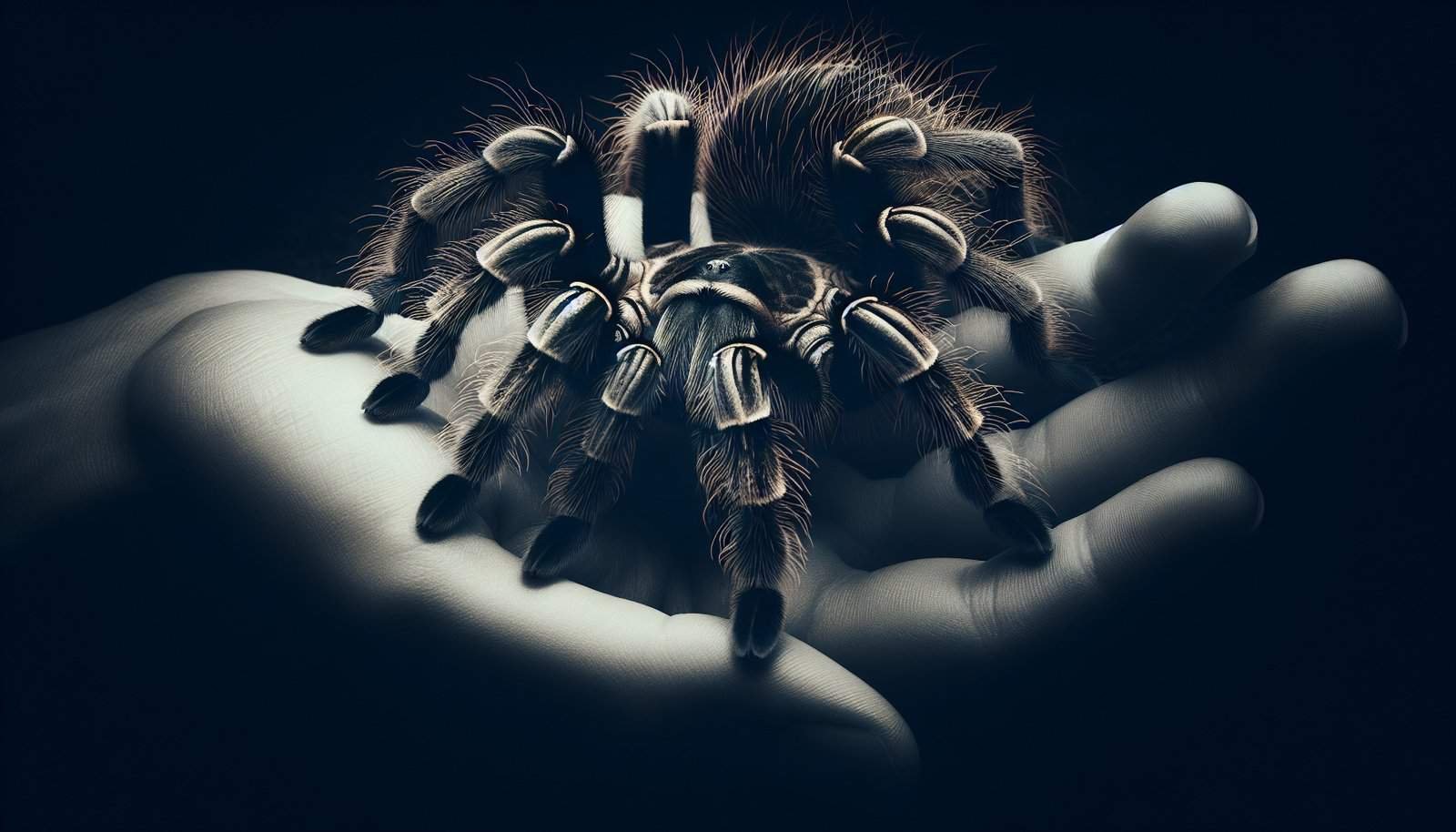Owning a tarantula can be an exhilarating and unique experience, but it also comes with the responsibility of safeguarding these fascinating creatures from potential predators. From curious curious pets to unwelcome critters sneaking into their enclosure, tarantulas face various threats that require proactive measures. In this article, we will explore some practical tips and precautions that tarantula owners can take to create a safe and secure environment for their eight-legged companions.
Housing
Tarantulas may be known for their intimidating appearance, but they can actually be quite vulnerable to predators. Ensuring a secure enclosure is crucial to keeping your pet tarantula safe and stress-free.
Choosing a secure enclosure
When selecting an enclosure for your tarantula, it’s important to choose one that is escape-proof and durable. Opt for tanks or enclosures made of transparent plastic or glass, as they are not only secure but also allow for easy observation. Avoid enclosures with wide gaps or holes that may allow predators to enter or your tarantula to escape. Additionally, choose an enclosure that provides enough space for your tarantula to move around comfortably.
Providing a safe hiding place
Tarantulas are naturally secretive creatures and require a safe hiding place in their enclosure. This not only helps them feel secure but also serves as an additional layer of protection against potential predators. Consider providing a small shelter made of bark or other natural materials for your tarantula to retreat to when it feels threatened. Make sure the shelter is securely placed in the enclosure and cannot be easily accessed by predators.
Predator-proofing the Environment
Creating a predator-proof environment around the tarantula’s enclosure is essential in keeping your pet safe from harm. By taking simple measures, you can significantly reduce the risk of predators invading your tarantula’s space.

Sealing gaps and cracks
Inspect the area surrounding the enclosure for any gaps or cracks that may serve as entry points for predators. Seal these openings with caulk or other appropriate materials to prevent unwanted intrusions. Pay close attention to areas near windows, doors, and vents, as these are common places where predators may attempt to gain access.
Using mesh screens on windows
Installing mesh screens on windows is an effective way to prevent predators, such as birds or other small animals, from gaining entry into your home and potentially reaching your tarantula’s enclosure. Make sure the screens are securely attached and have a fine enough mesh to prevent any small intruders from squeezing through.

Securing doors and vents
Just as with windows, it’s important to ensure that doors and vents are properly secured to prevent predators from entering your home. Check the integrity of door frames, weatherstripping, and any vents leading outside. Repair any damages and reinforce weak areas to minimize the risk of intrusions.
Keeping the area clean
Maintaining a clean and clutter-free area around the tarantula’s enclosure can help deter potential predators. Remove any debris, such as fallen leaves or branches, that predators could use as hiding spots or as a means to access the enclosure. Regularly clean the enclosure itself by removing uneaten food, molting remnants, and any other waste.
Avoiding Attractants
Preventing the presence of attractants can greatly reduce the likelihood of predators being drawn to your tarantula’s enclosure. By eliminating food and water sources, as well as strategically placing the enclosure, you can minimize the risk of predators being attracted to your pet.

Removing food sources
Ensure that any potential food sources for predators, such as insects or small animals, are kept away from your tarantula’s enclosure. Dispose of any uneaten food promptly and avoid leaving leftovers or crumbs around the enclosure. This will not only prevent the attraction of potential predators but also help maintain a clean and hygienic environment for your tarantula.
Preventing water sources
In addition to food, water sources can also attract predators to your tarantula’s enclosure. Avoid placing water dishes too close to the enclosure, as they may attract animals looking for a drink. Instead, provide your tarantula with a shallow water dish inside its enclosure and regularly replace the water to prevent the formation of stagnant pools that may draw unwanted attention.

Strategically placing the enclosure
Consider the placement of your tarantula’s enclosure to minimize the likelihood of predators being attracted. Avoid placing the enclosure near windows or doors that may be frequently opened, as this could increase the chances of predators catching a glimpse of your pet. Additionally, choose a location away from areas where potential food sources for predators, such as bird feeders or compost bins, are present.
Using Tarantula-safe Landscaping
The landscaping around your tarantula’s enclosure can play a significant role in providing a safe and predator-free environment. By using tarantula-safe landscaping techniques, you can further protect your pet from potential threats.
Avoiding tall grass or dense vegetation
Tarantulas prefer open habitats and are not typically found in areas with tall grass or dense vegetation. To discourage predators from approaching the enclosure, ensure that the surrounding landscaping does not provide hiding spots or pathways for predators to access the enclosure. Regularly trim any tall grass or vegetation near the enclosure and maintain a clean, open area.

Creating barriers around the enclosure
Creating physical barriers around the tarantula’s enclosure can be an effective way to deter predators. Consider installing a small fence or using mesh barriers around the perimeter of the enclosure. This can help prevent larger predators, such as cats or dogs, from getting too close and potentially causing harm to your tarantula.
Using mulch or gravel as ground cover
Choosing the right ground cover around the tarantula’s enclosure is important to minimize the risk of predators. Avoid using materials such as loose soil or sand that may attract digging predators. Instead, use mulch or gravel as ground cover as these materials are less likely to invite unwanted attention and are easier to maintain.
Installing Security Systems
Installing security systems can provide an additional layer of protection for your pet tarantula. By deterring potential predators and alerting you to any suspicious activities, these systems can help keep your tarantula safe and give you peace of mind.
Using motion sensor lights
Motion sensor lights are a simple but effective way to deter potential predators from approaching your tarantula’s enclosure. Install these lights near the enclosure or in strategic areas around your property where they can detect any movement. The sudden illumination can startle predators and discourage them from getting closer.
Installing surveillance cameras
Surveillance cameras can be a valuable tool in monitoring any activity near your tarantula’s enclosure. Install cameras in strategic positions to capture footage of any potential predators or suspicious behavior. This can help you identify any threats and take appropriate action to protect your pet.
Educating Family Members and Roommates
It’s essential to educate everyone in your household about tarantula safety to ensure that your pet is not inadvertently put at risk. By teaching others about proper handling techniques and setting clear rules for accessing the enclosure, you can help create a safe environment for your tarantula.
Teaching others about tarantula safety
Take the time to educate your family members and roommates about tarantula safety. Teach them about the natural behaviors and needs of tarantulas and how to interact with them safely. Emphasize the importance of not disturbing the tarantula unnecessarily and avoiding any actions that may stress or harm the pet.
Setting rules for handling and accessing the enclosure
Establish clear rules for handling and accessing the tarantula’s enclosure. Make sure everyone understands that direct interaction with the tarantula should be limited to those who are knowledgeable and comfortable in doing so. Encourage everyone to wash their hands before and after handling the tarantula to prevent the transmission of any potential contaminants.
Proper Handling Techniques
Knowing how to handle your tarantula properly is crucial for both the protection of your pet and your own safety. By following a few guidelines, you can minimize stress and potential harm during handling sessions.
Minimizing stress during handling
Tarantulas are sensitive creatures and can become stressed when handled incorrectly. Minimize stress by handling your tarantula only when necessary and keeping each handling session short. Avoid sudden movements or loud noises that may startle or agitate the tarantula. Additionally, always approach the tarantula from the front to avoid surprising it.
Avoiding rough handling
Handle your tarantula gently and with care. Avoid excessive force or pressure and never squeeze or pinch the tarantula’s body. Instead, place your hand or a soft object, such as a brush or card, beneath the tarantula and allow it to walk onto it voluntarily. This will help prevent any accidental harm to the tarantula and minimize the risk of it biting or becoming defensive.
Securely closing the enclosure
After handling your tarantula, always ensure that the enclosure is securely closed. Check all openings, including the lid or doors, to make sure there are no gaps or loose parts. This will prevent any escapes or unauthorized access to the enclosure by predators or other household pets.
Emergency Preparedness
Being prepared for emergencies is crucial when owning a tarantula. By taking the necessary precautions and having a plan in place, you can effectively deal with any unexpected situations that may arise.
Creating a first aid kit for spider emergencies
Having a well-stocked first aid kit specifically for spider emergencies is essential. Include items such as sterile gauze, antiseptic solution, tweezers, and a magnifying glass for examining any potential injuries. Familiarize yourself with basic first aid procedures for spider bites and make sure everyone in your household knows where the kit is located and how to use its contents.
Knowing emergency contacts
In case of an emergency involving your tarantula, it’s important to have the contact information of a veterinarian or animal expert who is knowledgeable in dealing with tarantulas. Research and save their contact details in an easily accessible place, such as on your phone or on the fridge. This will ensure that you can reach out for professional assistance promptly if needed.
Having an escape plan
While tarantulas are not known for being escape artists, unexpected situations can occur. It’s important to have a plan in place in case your tarantula does manage to escape its enclosure. Prepare a secure container or enclosure to safely retrieve the tarantula and set up a designated area where you can confine it until it can be returned to its proper enclosure.
Regular Monitoring and Maintenance
Regularly monitoring the tarantula’s enclosure and its surroundings is crucial to ensure the safety and well-being of your pet. By identifying and addressing any potential threats or damages promptly, you can prevent any harm to your tarantula and mitigate unnecessary risks.
Checking the enclosure for damages
Inspect the tarantula’s enclosure regularly for any damages or weaknesses. Look for cracks, gaps, or loose parts that may provide an opportunity for predators to enter. Repair any damages immediately to maintain the integrity of the enclosure and keep your tarantula safe.
Inspecting surroundings for potential threats
Regularly survey the area surrounding the tarantula’s enclosure for any potential threats. Look for signs of predators, such as footprints or droppings, and address them promptly. Additionally, remove any debris or objects that may have fallen near the enclosure and could be used by predators as a means to reach your tarantula.
Seeking Professional Help
Sometimes, seeking professional advice or joining supportive communities can provide invaluable guidance and support in keeping your tarantula safe. Consulting with a veterinarian or animal expert who specializes in tarantulas can help address any specific concerns or provide recommendations tailored to your pet’s needs. Additionally, joining tarantula owner associations or online forums can allow you to connect with experienced owners, share knowledge, and learn from their experiences.
In conclusion, protecting your pet tarantula from predators and ensuring its safety requires a combination of careful decisions, proactive measures, and ongoing monitoring. By choosing a secure enclosure, predator-proofing the environment, avoiding attractants, using tarantula-safe landscaping, installing security systems, educating family members, practicing proper handling techniques, preparing for emergencies, performing regular maintenance, and seeking professional help when needed, you can create a safe and secure environment for your beloved tarantula. Remember, your pet’s well-being and safety should always be a top priority.
